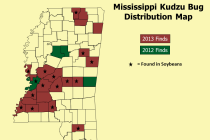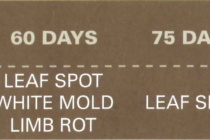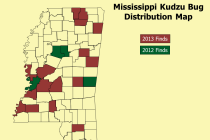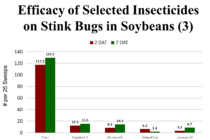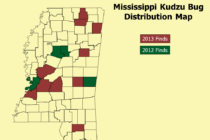👤Angus Catchot, Extension Entomologist
🕔13:25, 12.Jul 2013
I have had numerous calls on kudzu bugs in the last couple weeks, mainly from the southwest part of the state. Kudzu bugs were found in 4 counties in 2012 in MS. In 2013 we have now confirmed 10 additional counties, in which 6 were found in soybeans. Since these initial finds in soybeans in Warren, Claiborne, Hinds, Yazoo, Stone, and Rankin Counties, it has become common for consultants to find 4-8 adults per 25 sweeps, in a few cases up to 10-15 in a couple of these areas.
Read Full Article▸

